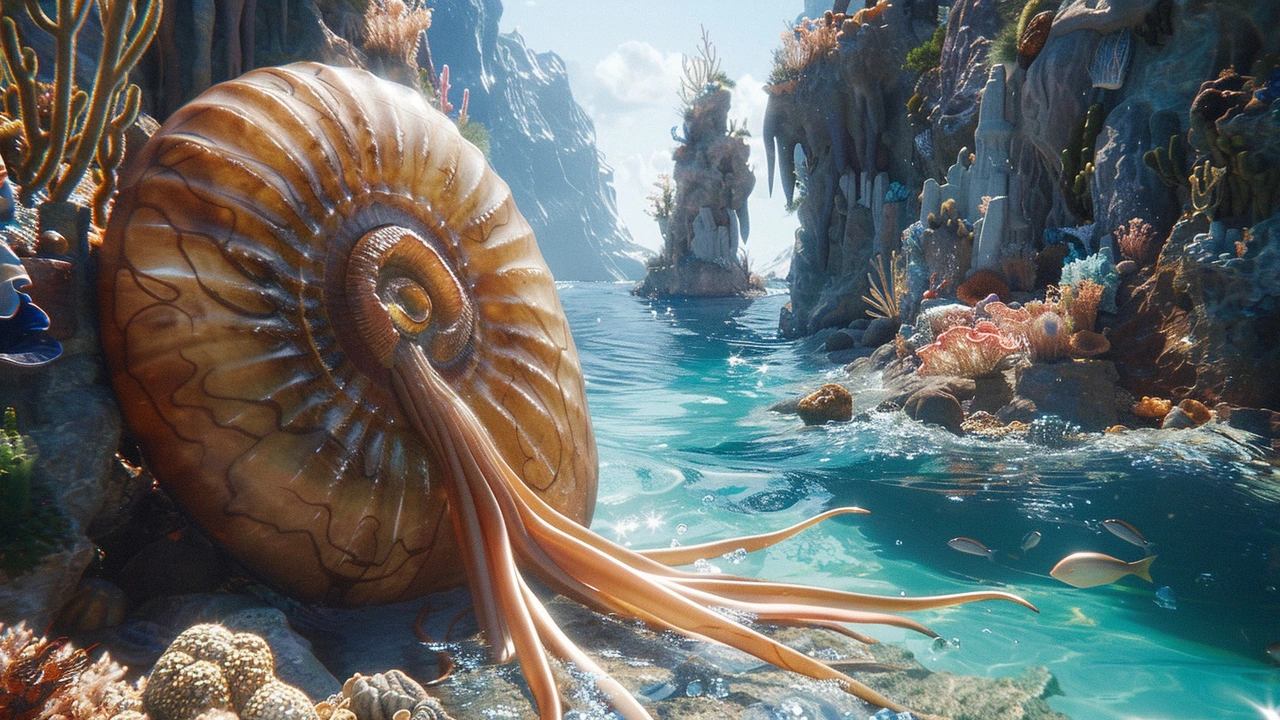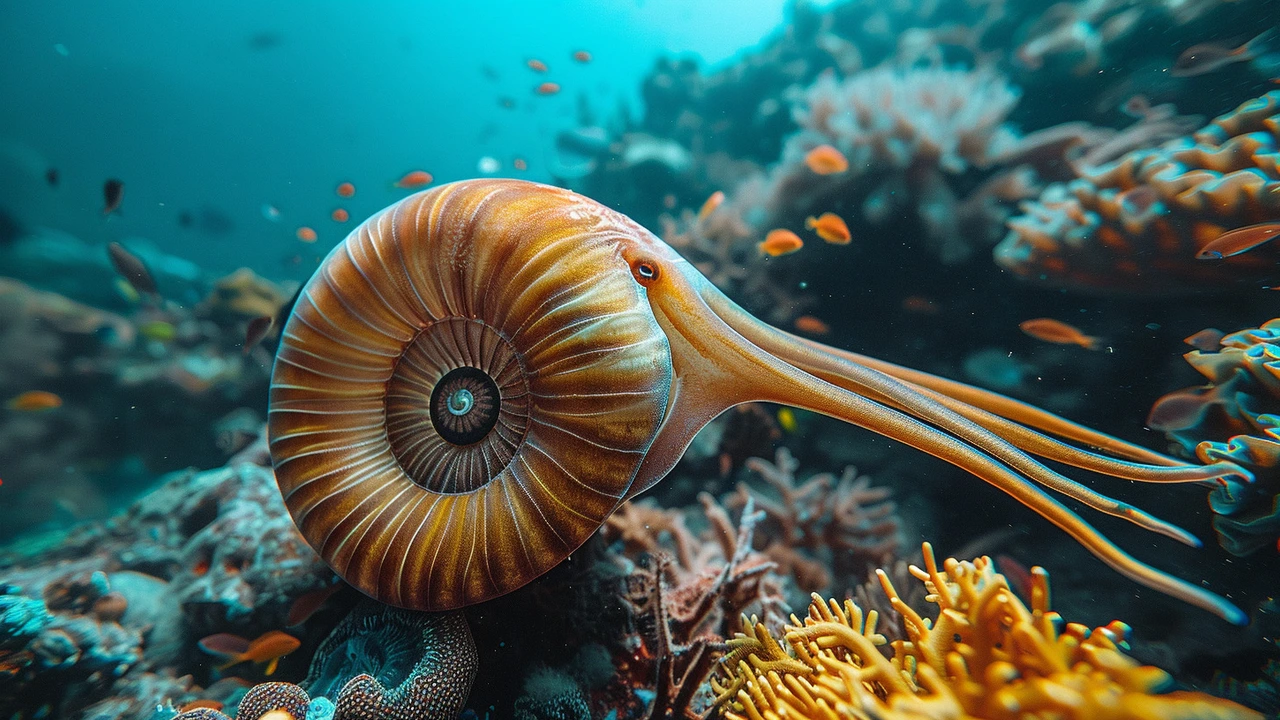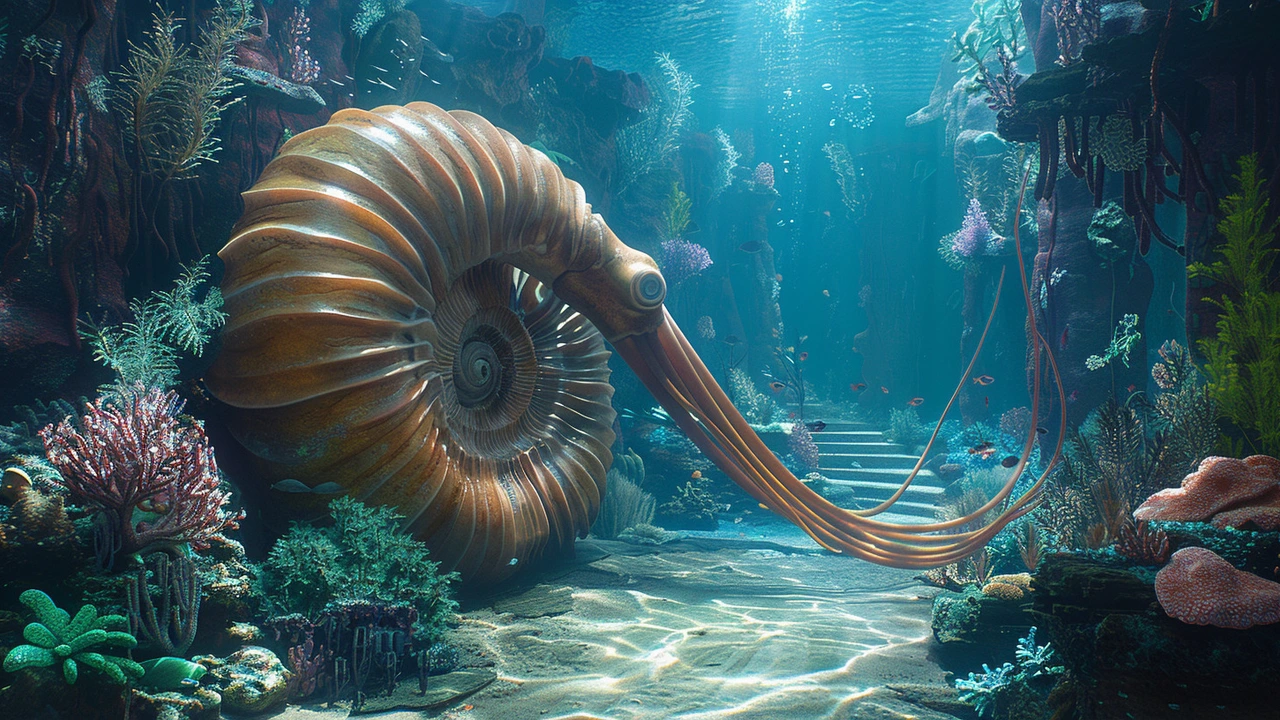Newly Unearthed Fossils in Argentina Reveal Nautilus-Like Cephalopod's Impressive History

Rediscovering *Epitornoceras baldisi*
In an exciting development from the field of paleontology, scientists have recently unearthed new fossils belonging to an enigmatic cephalopod species, *Epitornoceras baldisi*. This remarkable discovery has taken place in Argentina's Chigua Formation, providing fresh insights into the existence and distribution of this ancient marine creature. The cephalopod, which lived around 383 million years ago during the Late Givetian age of the Middle Devonian period, originally belonged to a genus named *Tornoceras*. However, new evidence has prompted researchers to reclassify it under the genus *Epitornoceras*.
This reclassification signifies *Epitornoceras baldisi*’s first recording in South America, marking a significant milestone in the study of ancient marine life. Until now, the genus *Epitornoceras* had only been documented in North America, North Africa, and Europe. This discovery sheds light on the widespread distribution and diversification of this genus following the Taghanic biocrisis, a significant extinction event during the Devonian period.
The Significance of the Chigua Formation
The Chigua Formation, located in Argentina's San Juan province, has long been a site of keen interest for paleontologists. The formation's rich geological history offers a window into the marine environments of the supercontinent Gondwana. The newly unearthed fossils of *Epitornoceras baldisi* were found in the uppermost part of this formation, adding a new chapter to the region's ancient past.
The fossils' rediscovery has allowed scientists to piece together the migratory patterns and ecological interactions of these cephalopods. By examining the ten new specimens collected, researchers have gathered valuable data on the species' morphology, habitat, and evolutionary trajectory. The presence of *Epitornoceras* in this southernmost part of western Gondwana suggests a migration from tropical regions to the cooler realms of the Malvinoxhosan Realm during the Late Givetian period.

Understanding *Epitornoceras baldisi*
*Epitornoceras* is recognized as a cosmopolitan genus that thrived in marine environments worldwide. Its adaptability and resilience are evident from its survival and subsequent diversification after the Taghanic biocrisis. Fossil records from Appalachian, Moroccan, and European sites have documented the genus' extensive reach. The newfound presence in Argentina further bolsters the understanding of their wide geographical dispersion.
These cephalopods, resembling their modern-day relatives like nautiluses and squids, were equipped with intricately coiled shells. The rediscovered specimens provide a richer, more nuanced understanding of their anatomical features and life habits. Researchers can now delve deeper into the adaptations that allowed *Epitornoceras* to flourish in diverse marine settings, from the tropical waters to colder, nutrient-rich regions of the ancient oceans.
The Paleontologists' Study and Methodology
The research team responsible for this discovery conducted a meticulous study of the fossils, emphasizing both morphological and statistical analyses. By comparing the Chigua Formation specimens with those from other global sites, they were able to draw significant conclusions regarding the reclassification and ecological significance of *Epitornoceras baldisi*. Their findings have been published in the renowned journal *Geodiversitas*, underlining the broader implications of this research in the fields of paleontology and evolutionary biology.
Access to advanced technology and collaborative efforts with international experts played a crucial role in this rediscovery. The team's work underscores the importance of interdisciplinary approaches in paleontological studies, helping bridge gaps in the fossil record and offering a more comprehensive view of ancient life on Earth.

Implications for Future Research
The revelation of *Epitornoceras baldisi* in South America opens new avenues for future research. Scientists are now poised to investigate further the climatic, ecological, and biogeographical factors that influenced the distribution and evolution of cephalopods during the Devonian period. The Chigua Formation, with its newly uncovered treasures, promises to be a focal point for ongoing and future paleontological explorations.
This discovery not only enhances our understanding of cephalopod evolution but also enriches the narrative of Earth's vast and dynamic prehistoric oceans. By piecing together the history of these fascinating creatures, researchers continue to unravel the complexities of life and its ever-changing nature through deep time.
In summary, the redescription of *Epitornoceras baldisi* serves as a testament to the ever-evolving nature of scientific inquiry and discovery. The convergence of meticulous fieldwork, advanced analytical techniques, and collaborative efforts has once again illuminated the ancient past, offering profound insights into the marine ecosystems of a bygone era. It is a reminder of the boundless wonders that remain hidden beneath the surface, awaiting the diligent efforts of dedicated scientists to bring them to light.
Great to see another piece of the Devonian puzzle falling into place. The Chigua Formation keeps proving it's a goldmine for cephalopod fossils. I wonder how these creatures managed that long migration across Gondwana. This find could reshape our view of marine dispersal routes.
They're hiding the real story behind these cephalopods-government labs have been studying their DNA for decades, and now they finally let us see a piece.
The stratigraphic correlation of the Chigua assemblage suggests a biogeographic vector consistent with paleoceanographic models.
The term "cosmopolitan" should be applied cautiously when describing a genus whose fossil record is still fragmentary.
The revelation of Epitornoceras baldisi from the southern reaches of Gondwana reads like a chapter torn from an epic novel of deep time.
Each coiled shell, preserved in limestone, whispers of oceans that once stretched beyond the imagination of modern scientists.
The sheer age of these specimens-over 380 million years-places them at the heart of the Devonian upheaval, a period when life was both flourishing and teetering on the brink of extinction.
What makes this discovery truly astonishing is the sheer geographic leap from previously known locales in North America and Europe to the remote basins of Argentina.
Such a distribution challenges our previous assumptions about the dispersal capabilities of nautiloid cephalopods during the Taghanic biocrisis.
It suggests that these creatures possessed ecological plasticity far beyond what the fossil record has allowed us to infer.
The morphological details-ornamented sutures, subtle variations in whorl expansion-provide a treasure trove for comparative anatomy.
By examining these features, we can begin to reconstruct the life habits of an organism that navigated both tropical and temperate seas.
The data also open a window into the paleoclimatic gradients that existed across the ancient supercontinent.
If Epitornoceras could traverse such vast distances, it implies that ocean currents and trophic networks were more interconnected than previously thought.
Furthermore, this find underscores the importance of interdisciplinary collaboration, as geochemists, sedimentologists, and paleontologists pooled expertise to unearth and interpret the fossils.
The advanced imaging techniques employed revealed internal structures without damaging the delicate shells.
Such methodological innovations are reshaping how we access the deep past, turning once‑inaccessible questions into testable hypotheses.
In the broader narrative of cephalopod evolution, this Argentine specimen acts as a missing link, bridging gaps between early Devonian forms and their later descendants.
Future expeditions to the Chigua Formation may yet uncover even more diverse assemblages, painting a richer picture of marine ecosystems during this tumultuous era.
Ultimately, each new fossil not only expands our scientific knowledge but also reminds us of the boundless mysteries still buried beneath the Earth's crust.
The isotopic signatures from the shell material could help quantify the temperature gradient that these cephalopods experienced, providing a direct paleo‑thermometer for the Late Givetian.
The biocrisis terminology must be used precisely; the Taghanic event refers specifically to the Middle Devonian extinction pulse, not a generic downturn.
Wow! Ths discovery is amazng and shows how many untold storyz are still out there waiting 2 be found.
While the find is noteworthy, the authors overstated the biogeographic implications without sufficient statistical support.
Another example of scientific hype.